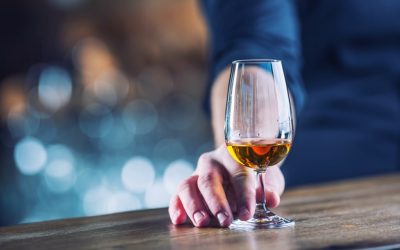Content
For example, the agent acamprosate modulates glutamate transmission by acting on NMDA and/or metabotropic glutamate receptors . Thus, by dampening excessive glutamate activity, acamprosate blocks excessive alcohol consumption. This process appears to depend on the involvement of genes such as Per2, which typically is involved in maintaining the normal daily rhythm (i.e., the circadian clock) of an organism (Spanagel et al. 2005). Those who have a physical dependence on a substance will likely be put into a medically supervised drug and alcohol detox process at the beginning of their treatment program, which will help alleviate their withdrawal symptoms. From there, they move into addressing the underlying causes of their substance use, which is the psychological side of addiction.
- It involves family and friends and sometimes co-workers, clergy or others who care about the person struggling with addiction.
- For example, NPY has powerful anxiety-reducing effects in animals.
- There are several types of GABAA subunits, and the subunit composition of the receptors differs among different brain regions and may change in response to environmental changes.
- The negative physical symptoms cause a person to drink again to feel better.
- The GABAA receptor α1 subtype in the ventral pallidum regulates alcohol-seeking behaviors.
- Restoring control, confidence, and self-worth start by taking meaningful action toward those goals.
Zironi I, Burattini C, Aicardi G, Janak PH. Context is a trigger for relapse to alcohol. Anxiety as a predictor of relapse in detoxified alcohol-dependent patients. Naltrexone decreases craving and alcohol self-administration in alcohol-dependent subjects and activates the hypothalamo-pituitary-adrenocortical axis. Miller physiological dependence on alcohol NS, Gold MS. Dissociation of “conscious desire” from and relapse in alcohol and cocaine dependence. Beta-endorphin, adrenocorticotropic hormone and cortisol secretion in abstinent alcoholics. Prolonged exposure to intermittent alcohol vapors blunts hypothalamic responsiveness to immune and non-immune signals.
Alcoholism in the Workplace: A Handbook for Supervisors
Our main goal is to help you along your recovery journey and get you the help you need. A brief, self-administered questionnaire sometimes utilised in individual or group treatments. Alcohol dependence refers to an entity in which only alcohol is the involved addictive agent. Alcoholism refers to an entity in which alcohol or any cross-tolerant addictive agent is involved. Your brain and body don’t like not having caffeine in them, so they turn up the pain.
How long does it take for brain chemistry to return to normal after alcohol?
It takes at least two weeks for the brain to return to normal after drinking. Therefore, this is when the alcohol recovery timeline begins. It is less able to suppress a desire to drink until the brain has recovered. The reason for this is that alcohol has harmed the brain's cognitive function.
Your surroundings can also influence your likelihood of becoming alcohol dependent. Social influences, family and friends, peer pressure, alcohol availability, and advertisements are all examples of environmental factors that can lead you to use and abuse alcohol. Stressful jobs, loss, trauma, and other challenging psychological and emotional circumstances can also be risk factors for addiction. If you continue to drink, you may start to become chemically dependent on alcohol.
At 1st Step Behavioral Health, we work with most insurance providers to cover your costs of addiction treatment.
Generally, individuals report feeling emotionally high when fully engaged in their favorite activities. They report happiness, joy, and a desire to continue the activity. Now imagine how you feel when you haven’t completed the activity in some time. Most people would report a desire, a need, or a craving to participate in their favorite activity. The first step in addressing alcohol addiction is to treat dependency and withdrawal.

At 1st Step Behavioral Health, we work with most insurance providers to cover your costs of addiction treatment. Peace Valley Recovery seeks to heal individuals and families affected by the disease of addiction through building a bridge to a peaceful and purposeful life. It mimics certain chemicals, GABA and glutamate, that the brain naturally produces and are required for proper functioning.
Physical Dependence vs. Addiction to Drugs and Alcohol
Please complete this reCAPTCHA to demonstrate that it’s you making the requests and not a robot. If you are having trouble seeing or completing this challenge, this page may help.
